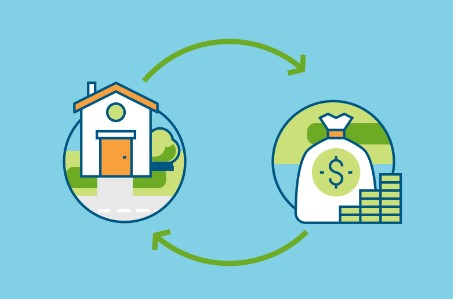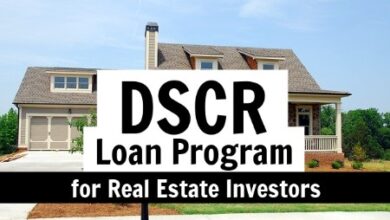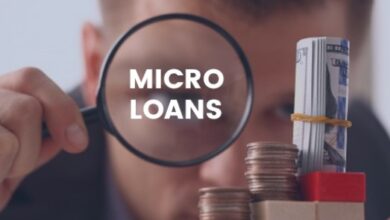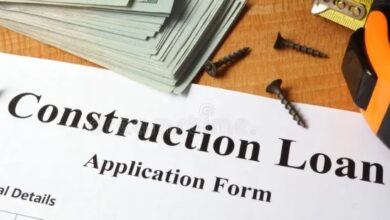Reverse Mortgages: A Financial Lifeline Gaining Popularity Among Seniors

Introduction
In today’s evolving financial landscape, securing a comfortable retirement has become more challenging for many older adults. As traditional savings fall short of covering rising healthcare costs and the general expenses associated with longer lifespans, seniors are exploring alternative ways to sustain their lifestyles. One financial product that has seen a significant uptick in popularity is the reverse mortgage. Designed to allow homeowners aged 62 and older to tap into their home equity without the burden of making monthly mortgage payments, reverse mortgages are providing a lifeline to many retirees. This comprehensive guide explores what reverse mortgages are, the factors driving their growing popularity, the benefits and risks involved, and key considerations for seniors contemplating this financial option.
Understanding Reverse Mortgages
A reverse mortgage is a unique loan product designed to help homeowners convert part of their home’s equity into cash. Unlike traditional mortgages, where borrowers make monthly payments to the lender, a reverse mortgage works in the opposite direction: the lender makes payments to the homeowner. The homeowner is not required to repay the loan until they sell the home, move out, or pass away. The primary benefit is the elimination of monthly mortgage payments, allowing seniors to use their home’s value as a source of income during retirement.
Types of Reverse Mortgages
There are several types of reverse mortgages, each catering to different needs and financial situations:
- Home Equity Conversion Mortgages (HECMs): Federally insured and by far the most common type of reverse mortgage, HECMs are regulated by the Federal Housing Administration (FHA). They offer flexibility and a range of options, including lump sum payments, lines of credit, or monthly distributions.
- Proprietary Reverse Mortgages: These loans are offered by private lenders and are designed for homeowners with high-value properties. Because they are not federally insured, they may come with different terms, but they can provide access to more significant amounts of equity for those with higher-value homes.
- Single-Purpose Reverse Mortgages: These are typically offered by state or local government agencies or nonprofit organizations. As the name suggests, the funds must be used for a specific purpose, such as home repairs or property taxes. These are often the least expensive reverse mortgage option but are far less common than HECMs and proprietary loans.
Read also: How Business Loans Cater to Small Businesses
Factors Contributing to the Popularity of Reverse Mortgages
Several factors have contributed to the growing popularity of reverse mortgages, making them an attractive option for an increasing number of seniors:
- Rising Living Costs: Inflation and the rising costs of healthcare, housing, and general living expenses are putting pressure on many retirees. Reverse mortgages offer an opportunity for seniors to alleviate financial stress by converting the equity in their homes into accessible funds for everyday expenses, travel, or even long-term care.
- Longer Life Expectancy: People are living longer, and retirement savings often need to stretch further. With a longer retirement ahead, seniors are seeking ways to sustain their financial independence. A reverse mortgage can help ensure that they have the financial resources necessary to maintain their lifestyle as they age.
- Increased Property Values: Real estate markets in many regions have experienced substantial growth over the past decade, leading to significant home equity gains for many homeowners. Seniors who bought their homes decades ago now find themselves sitting on a valuable asset. A reverse mortgage allows them to tap into this accumulated wealth without selling their home or downsizing.
Benefits of Reverse Mortgages
For the right homeowners, reverse mortgages can offer several key benefits:
- Flexible Cash Flow: Borrowers have the flexibility to receive their funds in a way that best suits their needs. They can choose to receive a lump sum, a line of credit, or monthly payments. This allows seniors to tailor the loan to their financial circumstances.
- No Monthly Payments: One of the most significant advantages of a reverse mortgage is that it eliminates the need for monthly mortgage payments, relieving financial strain for many homeowners.
- Federally Insured Protection: HECMs are insured by the Federal Housing Administration (FHA), offering borrowers an added layer of protection. This guarantees that if the loan balance exceeds the home’s value, neither the borrower nor their heirs will owe more than the home’s value at the time of sale.
- Tax-Free Income: The money received from a reverse mortgage is considered loan proceeds, not income, meaning it is generally not subject to income tax. This can be an appealing way for retirees to supplement their income without triggering additional tax burdens.
Risks and Considerations
While reverse mortgages offer numerous advantages, they are not without potential drawbacks. It’s important for seniors to consider the following risks:
- Accumulating Interest: Interest on reverse mortgages accrues over time, adding to the loan balance. This can diminish the homeowner’s remaining equity and reduce the inheritance left for heirs. Over time, the amount owed can grow significantly, leaving less value in the home when it’s sold.
- Impact on Heirs: Upon the homeowner’s death, the reverse mortgage must be repaid, typically through the sale of the home. Heirs will either need to sell the property or repay the loan to retain ownership. If the loan balance exceeds the home’s value, heirs are not liable for the difference, but they may not inherit any equity.
- Effect on Government Benefits: While reverse mortgage proceeds are not taxable, they can affect eligibility for means-tested government programs such as Medicaid and Supplemental Security Income (SSI). It’s essential to understand how receiving reverse mortgage payments might impact access to these critical benefits.
- Closing Costs and Fees: Reverse mortgages often come with significant upfront costs, including origination fees, mortgage insurance premiums, and closing costs. These expenses can add up and should be weighed carefully against the potential benefits of the loan.
Conclusion
Reverse mortgages have become an increasingly popular financial tool for seniors looking to improve their cash flow and maintain their independence during retirement. By leveraging the equity in their homes, retirees can access much-needed funds without the obligation of monthly mortgage payments. However, as with any financial product, reverse mortgages come with risks that must be carefully considered. Homeowners need to thoroughly assess their individual circumstances and consult with financial professionals before making a decision. When used wisely, a reverse mortgage can be a valuable tool in securing a stable and comfortable retirement, offering peace of mind and financial freedom for many seniors.




